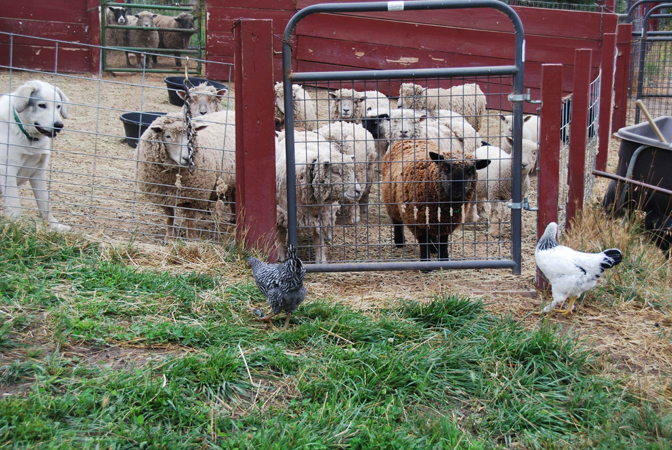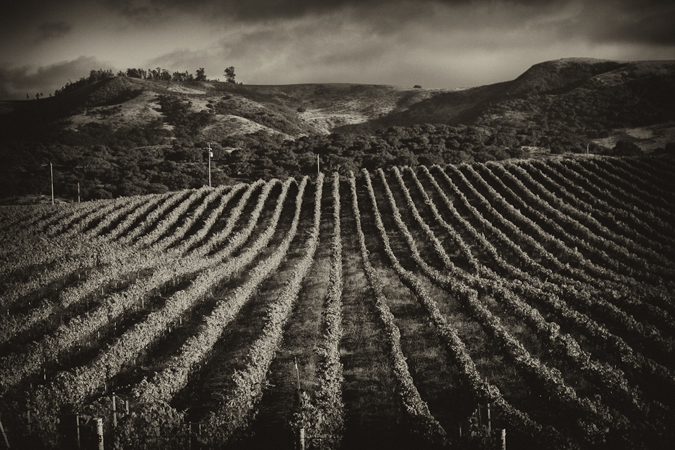July 16-22, 2010
Wes Hagen, VM/WM Clos Pepe Vineyard and Estate Wines
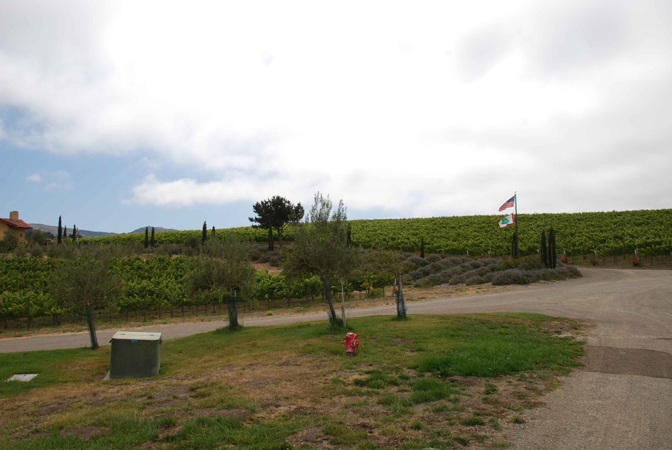
This morning the vineyard’s technology level has been thrown back to 1990, and we’re feeling the sting. Carrying my cup of Kenya to the keyboard early Thursday morning, I tried to check the weather, but the page wouldn’t load. Either would my email. Either would Google. So I picked up the phone to call our ISP and describe my discontent, and after two tries (keep in mind, I wasn’t through more than a sip of my first cup of coffee), it dawned on me that our phone system runs through our copper Verizon T1. Worse than that, our cell phones don’t work on the property in any reliable manner, so we have cell phone boosters (you see where this is headed?) that are also dependent on our interweb connection.
Well, at least we have electricity and water. So while I can’t call, email, or even text our situation to the ISP, I can write. In between sentences I am glancing over at my router to see if, by some miracle of automatic maintenance, the red light has turned blue, signifying our cupric connectedness to the outside world. Red light means stop. Keep writing. No one can hear you. Mumble mumble. Red rum. Red rum.
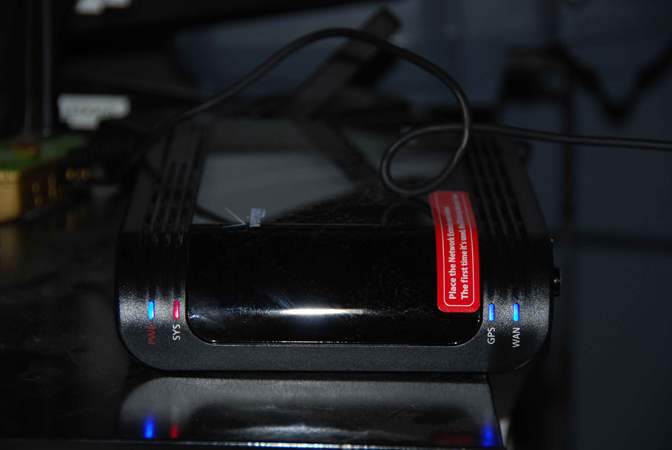
OK. I drove the vineyard truck to La Purisima Golf Course, where Verizon cell service begins to the West, and called our internet company. While waiting on hold I walked the fence line above hole 17, collecting three very nice, unscathed Titleist golf balls. Bonus. When I finally heard a human voice it only took about 5 seconds for her to tell me that they know about the problem and are chasing it down. Now I’m back at keys–3 golf balls up. (Glance to the left, light is still red.) At least I know it’s being worked on.
A vineyard doesn’t rely on internet or phone for management, per se, so I did check on the crew on my way in and out. They were sprucing the property up a little bit before starting the process of netting the vines. Veraison, the process of the fruit changing color and softening, has only just begun. There is less than 1% of the vineyard colored up—only a few isolated clusters on the perimeter of the vineyard are starting to show their first pinkish blush. Within a few weeks we’ll see most of the other clusters start to make the transition from hard and green to soft and lustrous purple-black for pinot noir and golden-green (and slightly translucent) for Chardonnay. Not many people know that Pinot Noir ripens a bit faster than Chardonnay, and we’re usually almost done with Pinot Noir harvest before starting on the white grapes here at Clos Pepe.
So before the nets go up we need to stage them all by row and then begin to apply them with the help of a tractor and a specialized trailer that allows them to be rolled out and spread over the tops of the vines. The nets are 14 feet wide, which allows for 7 feet of canopy height on each side. The nets will eventually be bundled on the bottom of the vine row, and tied with twist ties. This keeps the squirrels and smarter birds from crawling up under the nets and feeding on the precious, precious pinot. They generally ignore the Chardonnay, as nature generally signals birds with dark, rich color in fruit. As Chardonnay (and all white grapes) are human-perpetuated genetic mutants from red grapes, birds much prefer the comfort of following their instinct (and palate) by attacking pinot noir. Hell, I even heard that baboons in South Africa ignore all other grapes and go straight for the pinot. Score another point for evolution.
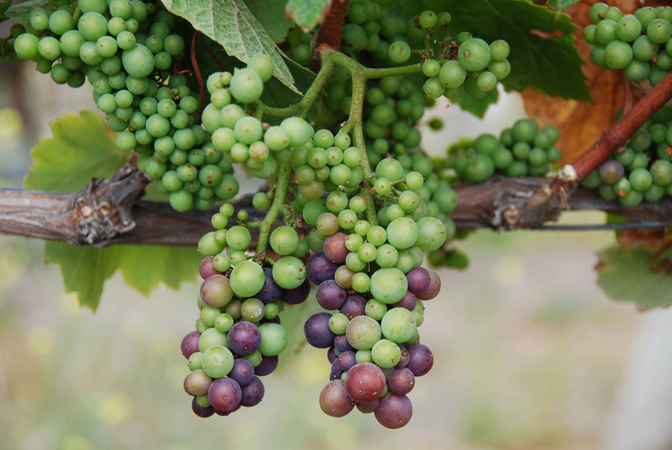
Again, before the nets are applied we need to do a touch more canopy management on the hillside. Ken Brown has asked for his section to be cleaned of laterals and a few more leafs, and we need to get to the Brewer-Clifton section to do a wholesale leafing beyond the 70% canopy gaps we established after flowering. Brewer-Clifton uses 100% stem inclusion, so they like more sun on the grape stalks to lignify them, or make them woody for better flavor in the wine. We hold back a little more leaf area over the clusters to keep them protected from hot sun in the case of a serious heat wave (which usually arrives in September).
Other than watching the grapes turn color and staging nets, I’ve been in a fury of ordering and checking materials for bottling and harvest. I’ve relaxed a bit after checking and double checking that all bottles, labels, capsules, corks, filters, inert gas canisters and tanks are either on the way or being delivered in the next week for our end-of-August bottling of our 2009 vintage. Now that I know all the materials are accounted for, I sleep a little better. And as the first grapes change color I am apt to order my yeasts and fermentation supplies for the current vintage. I went through my fermentation catalog and chose some of my favorite traditional yeasts (Assmanhausen, Barolo 97, RC212 for Pinot Noir and CY3079 for Chardonnay), but also added three or four new yeast strains to do some experimental lots with. I want to keep the winemaking traditional and minimalist, as always, but I’m never interested in keeping the house style static or homogenous. To me, science and innovation is as important as tradition—so I want to keep my winemaking balanced between what I know works, but allowing enough experimentation and open-mindedness to keep it moving forward and competitive with other crafty winemakers around the County, State and the world. I also ordered yeast nutrients, malolactic bacteria and some lab supplies. We’re ready to make some wine. A week from today we are also picking up our Chablisienne intern, Adrien Gautherin, from LAX. I plan to drive him straight to a Taco Truck (or In n’ Out) and then back to the Clos. Early the next morning we’ll be blind tasting every barrel in the winery to decide on our blends and Vigneron Select (reserve) pinot noir for 2009. He will be immersed in Clos Pepe culture immediately. What I can teach a seventh generation Chablis winemaker about Chardonnay is still a mystery to me, and I suspect Adrien may know, in his heart of hearts, that I plan to exploit him as much as he wants to exploit us. (The little red light is still mocking me from my file cabinet.)
Last few update topics for the week are freaky grapes, chicken injuries and entertaining friends at the vineyard.
Freaky grapes: Last weekend I judged wine for two days at the Long Beach Grand Cru. I was honored to be a panel chair again for the competition, which is a charity competition and tasting for the Los Angeles Legal Aid Foundation. For the past five years I have chaired the ‘pinot panel’, tasting all of the 150+ pinot noirs entered into the competition. This year I had a break from that position, and while I missed the ability to get my head wrapped around pinot noir vintages from all over the world, I was lucky (in a way) to be on the non-vinifera panel with New York wine whiz Jim Treasize. We tasted more than two dozen hybrid, labrusca and native American grape varietals: from Concord, Chambourcin, Norton, Seyval Blanc, Chardonnel, Catawba—from white to pink to red. And while some vinifera-snob wine judges would have felt slighted by the assignment, I found it wonderfully enlightening. The winemaking strides that Midwestern and East-Coast wineries have made in the last ten years border on the amazing. The wines are crafted extremely well and most are delicious to drink. Once you lose the ‘this doesn’t taste like California’ bias, the wines are beautifully expressive and purely American. This is part of the US evolving into a bona fide wine culture: embracing what is ours, from all over the country. Riesling in the Finger Lakes, a great Norton from Missouri. And while I’m not implying that you couldn’t be happy drinking West Coast wines for your entire life, I do recommend that you give some of these better wines a try to round out your knowledge of American wine. And if my friggin internet was working, I could attach a link to the award winners I tasted at the Long Beach Grand Cru. Later, I found these suggestions:
Try these New York wines for a change in routine: Riesling: Belhurst Estate Winery 2009 Finger Lakes Dry Riesling ($19) or a Catawba: Torrey Ridge Winery – NV Catawba, Finger lakes. Both Gold, Double Gold and Best of Class winners.
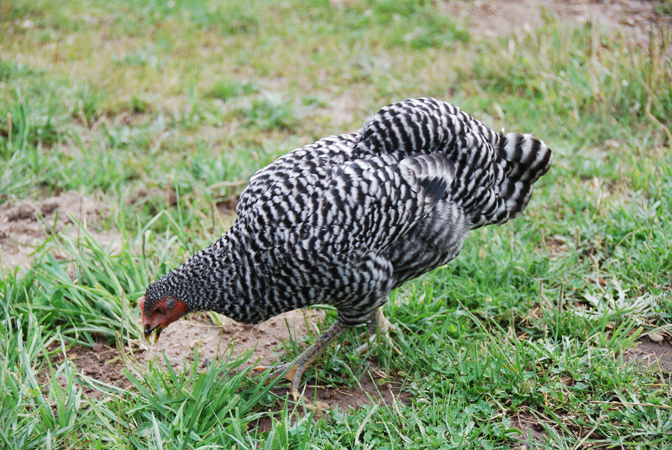
Chicken injury: As I was greedily scarfing down room-service pizza in my Long Beach hotel room, I got a panicked call from wife Chanda, who dutifully stayed at home with the animals while I was off playing in the heat-wave confines of greater Los Angeles. It turns out that while she was taking the greyhounds out for their nightly run, one of the chickens, her name is Alba, hopped the sheep fence and was cruising solo in the vineyard. Greyhounds are amazingly kind, gentle animals, but they also have been bred to keep a very strong prey drive so when the faux-bunny emerges and streaks down the track they will follow with a 45 mph glee and abandonment that is astounding. So Indy, our 12 year old brindled ex-racer took a few quick paces toward the chicken and picked the chicken up in his mouth—both menacingly and surprisingly gingerly. Chanda yelled at Indy to drop the chicken, and both amazingly and not surprisingly, he did. There was only a slight puncture on the bird under one wing—no wings or legs seem permanently injured, and after a few nights inside with us in a crate, the chicken has been successfully reintegrated with the flock. She is limping just a touch, but is expected to make a full (if not overtly lucky) recovery. These are the moments when Chanda’s amazing dog training skills come in handy.
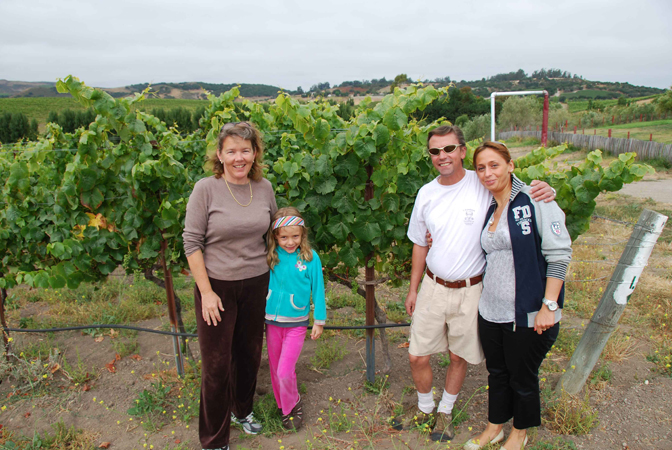
Entertaining friends. Sometimes vineyard management seems a bit overwhelming, between the anxiety of frost season, worrying about flowering, adjusting irrigation, and knowing that mother nature could wipe you out any time, like an extreme surfer out on a big day at Pipeline. It is a slightly insular life. Unlike the city, there’s no bar or restaurant in walking (or cab) distance to meet your friends, have a drink, stay connected. We are very lucky to have friends nearby, but even Solvang is 20 minutes away, so the nearest round trip to hang with buddies is easily an hour. But when we are lucky enough to have friends visit us here on the ranch, the vineyard takes on a magical aura that (ironically) sometimes reminds us how special it is to live here. We’ve begun to use our patio table a little more since the weather has warmed—and being with friends and family overlooking the vineyard has taken on a special meaning to us as of late. The endless bottles of wine help the experience as well. My high school buddy, Mark McPhillips and his wife Cheryl and daughter Colleen are visiting currently with Mark’s cousin from Como, Italy: Monica Guzzetti. I also love entertaining Euros at the Clos—I feel I have a responsibility to show them the same type of wondrous hospitality experience that I have received while visiting Italy. And I want them to know that the wine is every bit as good.
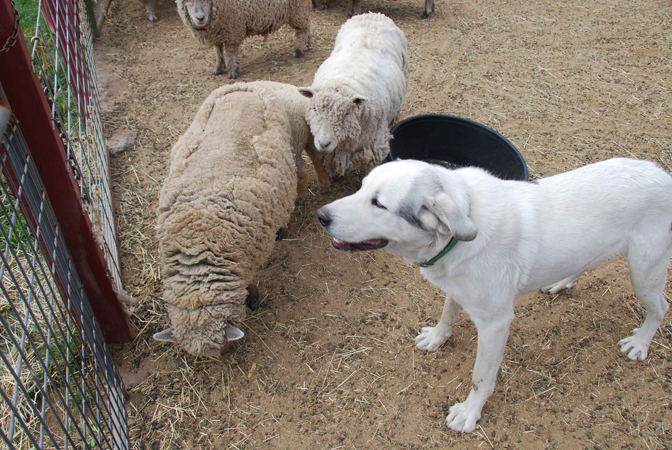
In the coming week I plan to spend a few days actively writing the Ballard Canyon American Viticultural Area petition, continue getting the vineyard netted, finishing up the last few rows of canopy management, and driving to LAX to get our new intern. Later today we’re off to top barrels and taste a few with the Italian retinue, and tonight I hope to fire up the grill again and fill that patio table with tasty things to eat and drink, and try to understand what the hell Monica is saying in Italian.
“Il vino ‘es la poesia della terra.” Wine is the poetry of the earth. And this is the gracious life. Ciao!


